
Journal of Applied Remote Sensing
Scope & Guideline
Empowering Solutions Through Applied Remote Sensing
Introduction
Aims and Scopes
- Remote Sensing Technologies:
The journal covers a wide range of remote sensing technologies, including optical, radar, and hyperspectral systems, emphasizing their application in environmental monitoring, agriculture, urban planning, and disaster management. - Data Processing and Analysis Techniques:
It emphasizes advanced data processing and analysis techniques, including machine learning, deep learning, and statistical methods, to enhance the interpretation of remote sensing data. - Environmental Monitoring and Management:
The journal focuses on applications related to environmental monitoring, such as land cover change detection, climate change effects, water quality assessment, and biodiversity conservation. - Integration of Multisource Data:
Research on integrating various data sources, including satellite, aerial, and ground-based measurements, is a core aspect, aimed at improving the accuracy and reliability of remote sensing applications. - Innovative Applications:
The journal highlights innovative applications of remote sensing in various fields, including agriculture, forestry, urban studies, and disaster response, showcasing real-world impacts and advancements.
Trending and Emerging
- Machine Learning and Deep Learning Applications:
There is a substantial increase in the use of machine learning and deep learning techniques for analyzing remote sensing data, reflecting a trend towards leveraging AI for improved accuracy and efficiency in various applications. - Multi-Source Data Fusion:
The integration of data from multiple sources, including satellite, aerial, and ground-based observations, is gaining traction, as researchers explore how to combine these datasets for comprehensive environmental assessments. - Precision Agriculture:
Research focused on precision agriculture is on the rise, with studies exploring how remote sensing can optimize crop management, enhance yield prediction, and monitor agricultural practices in real-time. - Climate Change Monitoring:
An increasing number of publications are dedicated to the use of remote sensing for monitoring climate change impacts, such as changes in land use, vegetation dynamics, and water resources. - Urban Remote Sensing:
The application of remote sensing in urban studies, including urban heat island effects, land use changes, and smart city development, is becoming a prominent theme, reflecting growing urbanization challenges.
Declining or Waning
- Traditional Statistical Methods:
There has been a noticeable decrease in the publication of papers focusing solely on traditional statistical analysis methods for remote sensing data, as more sophisticated machine learning and deep learning approaches gain prominence. - Basic Remote Sensing Theory:
Research that primarily emphasizes foundational theories of remote sensing without practical applications or advancements in technology is becoming less common, as the community shifts towards applied and innovative methodologies. - Conventional Image Processing Techniques:
There is a waning interest in conventional image processing techniques that do not incorporate contemporary advancements such as AI and machine learning, as researchers increasingly seek more robust and efficient methods. - Single-Sensor Studies:
The focus on studies utilizing single-sensor data is declining, with a growing trend towards multi-sensor and multi-platform approaches that provide more comprehensive insights. - Generalized Land Cover Classification:
Papers presenting generalized land cover classification without detailed context or innovative approaches are appearing less frequently, as the field moves towards more nuanced and context-specific applications.
Similar Journals

ISPRS International Journal of Geo-Information
Connecting insights, shaping the future of geoinformation.ISPRS International Journal of Geo-Information, published by MDPI, stands at the forefront of the field of geospatial sciences, contributing valuable knowledge and research insights since its inception in 2012. This open access journal, which boasts an impressive collection of articles that emphasize the integration of geographic information systems (GIS) in Earth and planetary sciences, currently achieves a remarkable standing, with a 2023 impact factor ranking in the Q1 category for both Earth and Planetary Sciences and Geography, Planning and Development. Researchers and professionals engaged in the study of spatial data, remote sensing, and innovative geoinformation technologies will find the journal an essential resource, offering diverse perspectives and methodologies. With its open access model, the journal aims to promote the dissemination of knowledge globally, fostering collaboration among scholars while pushing the boundaries of research in geoinformation disciplines. The journal is based in Switzerland and is well-positioned to contribute significantly to the understanding and application of geospatial data for societal advancements.

International Journal of Applied Earth Observation and Geoinformation
Integrating Knowledge for a Resilient Planet.International Journal of Applied Earth Observation and Geoinformation is a premier peer-reviewed journal published by Elsevier, focusing on the integration and application of earth observation and geoinformation technologies across diverse fields. With an open access model established in 2020, this journal enhances accessibility and dissemination of research crucial for addressing global challenges related to climate change, resource management, and sustainable development. The journal occupies a notable position within the academic community, featuring a Q1 ranking in multiple categories including Computers in Earth Sciences, Earth-Surface Processes, and Global and Planetary Change, reflecting its significant impact and relevance in these disciplines. It is recognized for its high-quality articles that explore innovative methodologies and applications, making it an essential resource for researchers, practitioners, and students alike who seek to advance their understanding of earth dynamics and geospatial technology. The journal is indexed in Scopus with impressive rankings that underscore its high citation impact and scholarly influence, with an emphasis on providing a platform for the latest findings in management, monitoring, and policy in environmental science.
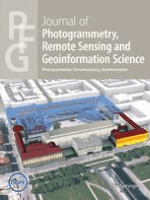
PFG-Journal of Photogrammetry Remote Sensing and Geoinformation Science
Advancing Knowledge in Photogrammetry and Remote SensingPFG-Journal of Photogrammetry Remote Sensing and Geoinformation Science, published by Springer International Publishing AG, stands as a prestigious peer-reviewed journal at the intersection of cutting-edge technology and the vital disciplines of Earth and Planetary Sciences, Geography, and Instrumentation. With an impressive impact factor and ranking within the Q1 category, this journal regularly publishes innovative research, methodologies, and case studies that drive advancements in the field. As of its converged years from 2017 to 2024, the journal focuses on the latest trends in photogrammetry, remote sensing, and geoinformation science, providing a crucial platform for researchers, professionals, and students alike. Its open access model ensures that findings are widely accessible, fostering collaboration and knowledge dissemination throughout the global scientific community. Located in Switzerland, geographical and technological diversity is embraced, making the PFG Journal an essential resource for those dedicated to exploring the complexities of our planet and contributing to sustainable development.
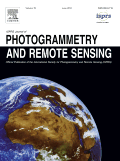
ISPRS JOURNAL OF PHOTOGRAMMETRY AND REMOTE SENSING
Delivering Premier Research for a Global AudienceISPRS Journal of Photogrammetry and Remote Sensing is a prestigious publication at the forefront of the fields of photogrammetry and remote sensing. Established in 1989 and published by Elsevier, this journal has consistently maintained a strong academic standing, currently holding a top-tier Q1 ranking across multiple categories, including Atomic and Molecular Physics, Computer Science Applications, and Engineering. This reflects its vital contribution to advancing knowledge and technology in these dynamic fields. The journal is not only a vital resource for researchers and professionals but also serves as an essential academic platform for students keen on delving into the latest developments in geospatial sciences. The journal operates under a non-open access model, ensuring that submitted research adheres to the highest standards of scholarly communication and integrity. With an impactful focus, it brings innovative research, comprehensive reviews, and significant case studies to a global audience. The ISPRS Journal is crucial for those aiming to enhance their understanding and application of remote sensing techniques within various scientific disciplines.
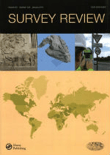
SURVEY REVIEW
Illuminating Complex Challenges in Civil and Structural EngineeringSURVEY REVIEW is a distinguished journal published by Taylor & Francis Ltd, focusing on a diverse range of disciplines including Civil and Structural Engineering, Computers in Earth Sciences, and Earth and Planetary Sciences. With an ISSN of 0039-6265 and an E-ISSN of 1752-2706, this journal has been a vital resource for scholarly communication since its inception in 1963. Positioned within the Q2 and Q3 quartile categories according to the latest rankings, it is recognized for its significant contributions to advancing knowledge in multiple fields, specifically holding a rank of 64/159 in Earth and Planetary Sciences and 32/73 in Computers in Earth Sciences. Researchers, professionals, and students benefit from its critical insights into complex engineering and scientific challenges. Although SURVEY REVIEW is not open access, it remains a highly cited journal, making it an essential avenue for disseminating pivotal findings that impact both academia and industry practices.
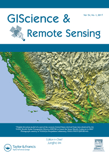
GIScience & Remote Sensing
Transforming Data into Earthly DiscoveriesGIScience & Remote Sensing, published by Taylor & Francis Ltd, stands as a leading journal in the realm of Earth and Planetary Sciences, holding a prestigious Q1 ranking. Since its transition to Open Access in 2022, the journal has significantly broadened its reach, enabling researchers, professionals, and students across the globe to disseminate and access cutting-edge research related to geographic information science and remote sensing technologies. With a focus on publishing high-quality, peer-reviewed articles that contribute to the understanding of the Earth’s processes, environments, and interactions, this journal not only supports advancements in scientific knowledge but also fosters interdisciplinary collaboration. Based in the United Kingdom, GIScience & Remote Sensing continues to pave the way for innovative methodologies and applications, solidifying its vital role within the scientific community.
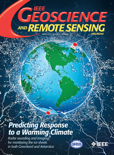
IEEE Geoscience and Remote Sensing Magazine
Transforming Data into Insight for a Sustainable FutureIEEE Geoscience and Remote Sensing Magazine, published by the esteemed IEEE-Institute of Electrical and Electronics Engineers Inc, serves as a pivotal platform for cutting-edge research in the realms of geoscience, remote sensing, and related disciplines. With an ISSN of 2473-2397 and E-ISSN of 2168-6831, this prestigious magazine has established itself as a leading resource in its field, achieving a Q1 ranking across multiple categories including Computer Science, Earth and Planetary Sciences, and Electrical and Electronic Engineering. Researchers will appreciate its high impact, recognized by impressive Scopus rankings—2nd in Physics and Astronomy, 3rd in Earth Sciences, and 7th in General Computer Science, placing it firmly in the top percentiles globally. Published bimonthly and compatible with various access options, the magazine aims to disseminate innovative solutions and technological advancements, fostering collaboration and knowledge-sharing among professionals, students, and industry stakeholders. As it converges its contributions from 2013 to 2024, IEEE Geoscience and Remote Sensing Magazine continues to significantly influence the scientific community's understanding of the planet and its systems.

Remote Sensing
Exploring Earth's Mysteries Through Remote SensingRemote Sensing is a highly esteemed journal published by MDPI, dedicated to the domain of Earth and Planetary Sciences. With an impressive impact factor reflected in its rank of #16 out of 195 in the general Earth and Planetary Sciences category, this journal achieves a commendable 92nd percentile among its peers, indicating its significant contribution to the field. Since its inception in 2009 as an Open Access journal, it has enabled researchers, professionals, and students from around the globe to access high-quality, peer-reviewed articles that delve into the latest advancements in remote sensing technologies, methodologies, and applications. Based in Switzerland, Remote Sensing serves as a vital platform for disseminating innovative research that supports and enhances our understanding of Earth's processes and environments, ensuring scientific knowledge remains freely accessible and impactful.

Journal of Remote Sensing
Connecting Technology and Environment for Global ImpactThe Journal of Remote Sensing is a leading scholarly publication dedicated to advancing knowledge and research in the field of remote sensing. Published by the American Association for the Advancement of Science, this open-access journal, which has been available since 2021, strives to provide an inclusive platform for researchers, professionals, and students alike to share transformative findings and innovative techniques related to Earth and planetary sciences, as well as their applications in social sciences and geography. With impressive Scopus rankings, placing it in the 94th percentile for Earth and planetary sciences and the 93rd percentile in geography, the journal is recognized for its high-impact contributions to the field. Researchers can access invaluable content without barriers, ensuring that the latest advancements in remote sensing technology and methodologies are widely disseminated and utilized. By fostering interdisciplinary collaboration and promoting high-caliber research, the Journal of Remote Sensing is becoming an essential resource for anyone interested in the intersection of technology and environmental studies.
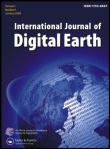
International Journal of Digital Earth
Pioneering digital solutions for Earth’s challenges.Welcome to the International Journal of Digital Earth, a premier open-access journal published by Taylor & Francis Ltd, dedicated to advancing the field of digital geoscience. With its ISSN 1753-8947 and E-ISSN 1753-8955, this journal has established itself as a vital resource for scholars and practitioners alike since its inception in 2008. The journal is at the forefront of interdisciplinary research, showcasing a diverse scope from Earth sciences to computer science applications, evidenced by its impressive ranking in the 2023 Scopus database. It holds a Q1 categorization in Earth and Planetary Sciences, with a percentile rank among the top 16% of its peers, and also stands out in the Q2 quartile for both Computer Science Applications and Software disciplines. The journal's commitment to open access, established in 2022, underscores its dedication to disseminating knowledge and fostering collaboration. By providing a platform for high-quality research, the International Journal of Digital Earth plays a critical role in addressing the complexities of our changing planet through innovative digital solutions. Whether you are an experienced researcher or a student, this journal is an essential addition to your academic toolkit.